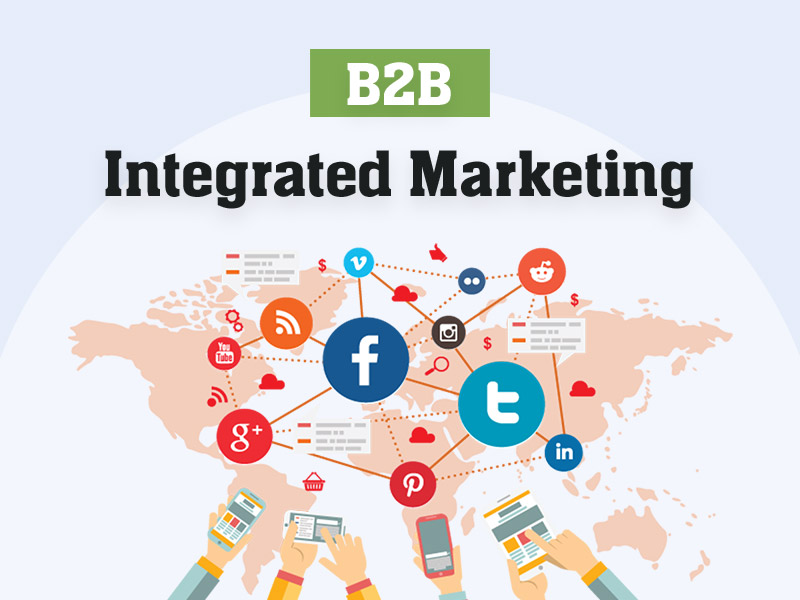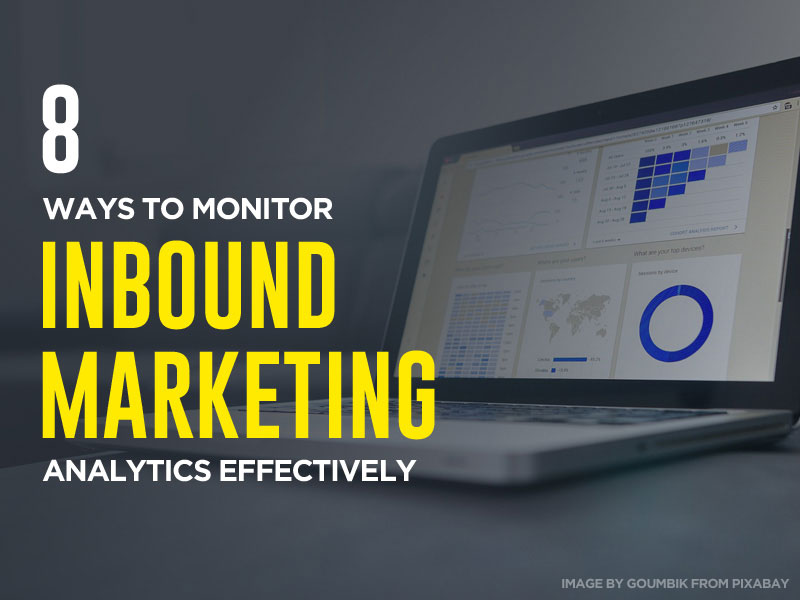Social media dominates the world of digital marketing. But on the other hand, a well-developed strategy is the only way to ensure a successful campaign and the highest possible return on investment.
To optimize your overall return on marketing investment, your social media operations must be linked with other digital strategies. Because of this, each business or organization needs a unique social media scheduler and design depending on its current position in social media, goals, and resources.
Several fundamental, essential building blocks are in place to guarantee that your business receives many social media initiatives, even when everything in social media is founded on various independent variables. But maintaining a regular social media presence is a laborious endeavor. To help you publish your material on social media at the best and most appropriate moment, you may utilize RecurPost, one of the most acceptable Hootsuite alternatives available at a reasonable price. Here is a list of some of the most crucial components of an effective social media plan!
The Most Crucial Elements of Social Media Strategy
Recognize Your Audience
Like any marketing or advertising approach, you may improve your social media presence by knowing your audience. For instance, the demographics, geography, and firm are essential areas to start when developing a solid marketing description or client persona.
Use digital data access to comprehend your target market’s preferences, motivations, concerns, and habits. The only social media plan that can then be developed communicates and produces the desired reaction.
Choosing the Best Platform
It is common for brands to leverage various channels in a social media campaign. However, you are not required to be active across all platforms. Sometimes, using too much social media dilutes your efforts and messaging.
The most effective platforms for your business engage your target market and offer tools that let you effectively advertise your brand. For instance, visual merchandising retailers usually do well on Pinterest, and many fitness businesses have succeeded in using Instagram’s optical tactics.
Data-Informed Risk-Taking
Every one of your digital marketing methods will include some level of risk. However, you may reduce risk’s unfavorable effects by using data. First, gather information as you roll out your initial campaign messaging, then examine what you learn from it.
You can examine the specific consequences of your efforts thanks to the detailed data that Facebook and other well-known platforms offer. However, you need to be able to do data analysis to decide on further optimization.
Learning and adaptation are ongoing processes
Measured risk and a plan for learning from and adjusting to your campaigns go hand in hand. The capacity to adapt strategies is a crucial benefit of digital communication over traditional media efforts.
To get the most remarkable results, test several different ad variations and increase ad delivery. The ideal social media and marketing channels for each area of your organization may be identified using segmented data.
Integrate it into your digital strategy
Don’t consider your social media strategy to be a stand-alone part of your marketing strategy. Instead, include it in your comprehensive digital marketing plan.
You want to develop your brand identity as you share tales on social media and in other media. The best results are frequently obtained via multi-channel marketing initiatives with logical message sequencing across websites, blogs, social media, email, and other channels.
Quick tip: Utilizing an email signature generator contributes to a successful social media strategy by incorporating links, seamlessly increasing brand visibility and engagement.
These strategies will be effective, but you also need some crucial business social media advice. Observations are as follows:
Begin with a strategy
With social media, getting things going for a company is simple. Since we all utilize social media daily, creating a Facebook page for your business, starting an Instagram account, or opening a Twitter account won’t put you back any money.
But before you dive right in, keep in mind that any excellent company strategy starts with a sound plan. Yes, content marketing may employ social media scheduling solutions like RecurPost. Conversely, the time and effort required to demonstrate a commitment to your company.
Without a plan, you won’t clearly understand what you’re aiming to do. Sadly, there is no way to determine whether you are receiving a return on your investment. So spend some time creating a social media plan in advance. This ensures that all of your social initiatives support specific commercial goals.
Select the Correct Social Media Platform
Don’t try to predict how much time your target audience spends online. Your instinct may tell you to ignore Facebook and concentrate on Instagram and TikTok if you’re seeking to target Generation Z.
However, data reveals that about a quarter of Facebook users are between 18 and 24. Socialising might not seem like a top concern if you’re trying to sell anything to baby boomers. On the other hand, Facebook’s fastest-growing audience segment is those over 65.
It would be best to research to ensure that you properly use social media for business. This might assist you in discovering how your target audience uses the internet. However, the choice of a platform need not be a one-size-fits-all endeavor. Your business may be better off using a platform like LinkedIn, for example, so take a look to see all LinkedIn industries to check whether you fall into one of the industry categories they cover.
If you have an excellent social media strategy but the wrong website, your product could not reach as many people as it might. For a wider audience, you should have a good website. Although employing WordPress or Magento eCommerce development services may be a more cost-effective alternative, building websites is expensive.
Understand your target market
You may micro-target your audience while using social media for business. It would be best to decide who your target market is, though. Gather data about your present clientele to start. Then, proceed to a deeper level by using social media analytics. You can quickly find out who is engaging with you on social media and purchasing from you. Create buyer personas once you’ve determined who your target market is to assist you in deciding how to communicate with them most successfully.
Enlarge your audience
Once you clearly understand your primary target audience, you may revise your social media approach. Then it would be wise to consider immediately reaching out to other people who share their interests. Thanks to this thorough audience strategy, the average number of monthly members increased more than tenfold. Social media may be used to improve the customer base for your neighborhood company. Then, you may connect with new local customers who are already prospective customers.
Take note of trends
We’re not advising you to partake in every popular meme. However, keeping an eye on social media trends might aid in your understanding of what users are seeking when they access their accounts. This gives you the ability to create material that is both significant and long-lasting.
Bonus: Use a free social media strategy template to plan your approach quickly. Use it to inform your employer, team members, and clients about the approach and keep track of the results. Road trips, for instance, were a hot topic of web study when travel changed from a worldwide to a much more local experience last spring. In response, State Farm created a collection of pins on driving and how it helped its clients stay safe when things became tough. People use social media nowadays for the reasons listed below:
- To find entertaining material to pass the time.
- To keep in touch with previous acquaintances.
- To share images or videos with others.
Always keep the most recent demands of your audience in mind. What was successful last year might not be successful this year. Social listening is a great way to learn more about what your audience (and potential audience) wants to hear from your business.
Be active in your community
Within large social networks, smaller groups are becoming increasingly important. You have many opportunities to connect with like-minded individuals and companies in your niche as a consequence, whether through Facebook Groups, Twitter Chats, or LinkedIn Groups.
Participating in communities may help you build your authority as a person or brand and connect with your most passionate customers.
On the social media sites where you are active, search for communities related to your industry, and then start interacting there. You may also form groups around your company to attract customers that share your interests and are motivated to promote your brand.
Don’t let algorithm changes deter you
Social media companies have a reputation for arbitrarily and abruptly changing their algorithms, which leaves many users disappointed with their lack of visibility. Using different content methods to “beat” the algorithm might be tempting; instead of searching for a quick fix, attempt to determine the algorithm’s change and modify your content strategy. In many circumstances, maintaining high-quality content will help you avoid severe penalties from algorithm changes.
It’s crucial to be everywhere and follow your people to where they find the most value as algorithms change. Instagram is the ideal illustration. Because of the ongoing changes to Instagram’s news feed algorithm, many users have noticed a sharp reduction in interaction with their photographs. On the other hand, Instagram Stories has remained reliable and always posts in reverse chronological order. Additionally, there are more than 500 million daily active users of Instagram Stories.
So, try contacting people through Instagram Stories if your photographs aren’t garnering as much interest as you’d want. To get others to connect to and like your photo when you have a new post on your feed, you may publish a Story. This lets the computer know that people are interested in reading your content, which enables it to display them to users who engage with them more efficiently.
Organize a joint effort with influencers and micro-influencers
The most challenging element of maintaining a virtual entertainment presence may be winning the crowd’s trust on stages that are so overloaded with content. Collaborating with influencers in your market to target your audience more specifically is a great idea.
When you work with an established influencer with a sizable following in your field, you expose your business to a new audience that may not be aware of your company.
Additionally, many marketers use micro-influencers, who have a modest but devoted and individualized fan base. A micro or nano-influencer can give an extra layer of legitimacy as influencer marketing becomes increasingly common. Receiving a shout-out will communicate to their loyal fans that they recommend your company as one to trust. These fans know, like, and trust them.
Include each and every team member
Your social media posts don’t have to come only from your social media staff. Encourage employees from diverse company departments to help with your social media marketing initiatives. The more actively your team participates, whether writing blog posts, posting photos, or showing fans behind the scenes, the better.
It will boost transparency and their trust in you as a business if you can convince your followers that there is a team behind the company they support. One company that does this regularly is Into The Gloss. To show fans some BTS of their life, they frequently include team members and give them control of their Instagram Stories.
Keep track of and raise your performance
As you put your social strategy into practice, it’s essential to keep track of what works and what doesn’t. Then, you may adjust your efforts for better outcomes. The analytics tools mentioned above provide a clear view of your social media activities and help you keep track of the information that matters most. Then, increase your audience and efforts as you figure out what works. One of the key advantages of social media for small businesses is the ability to use the tools to maximize your business and your budget at any given time.
Conclusion
Because social networking is evolving so fast and because new trends and enhancements appear every year, marketers must reconsider their strategies. Whether you already have a sizable social media following or are just getting started, use these methods when creating your social media marketing plan. By expanding your audience, they might assist you in gaining an advantage over your rivals. These are likely the main factors to consider when developing a successful social media marketing plan. Until you think about each of these aspects in your planning, you won’t be able to perform at your best.







